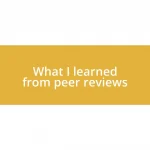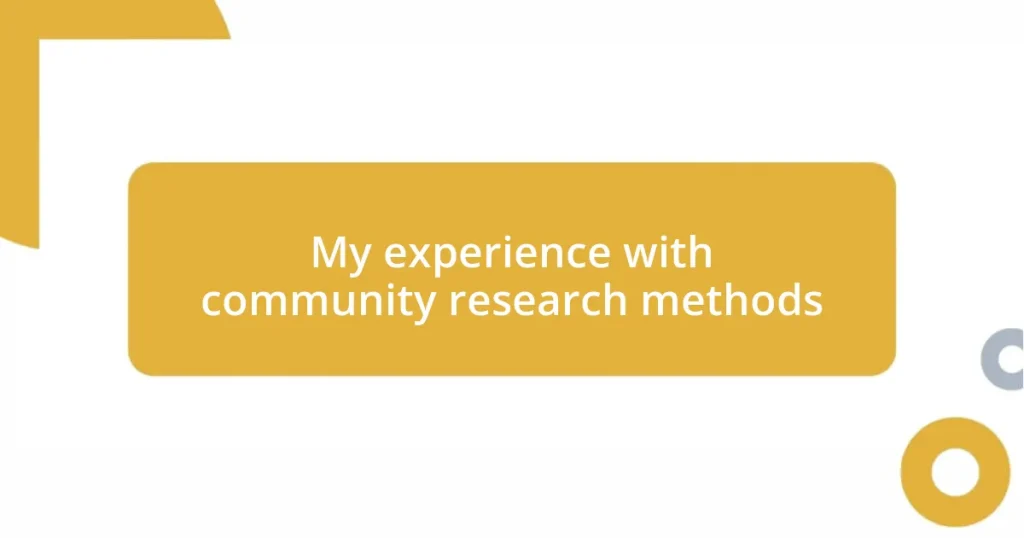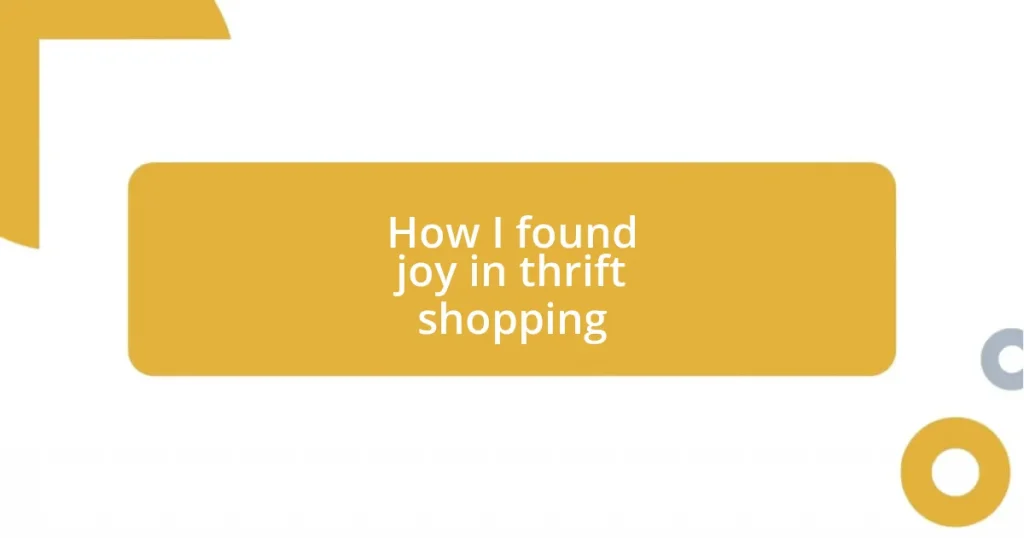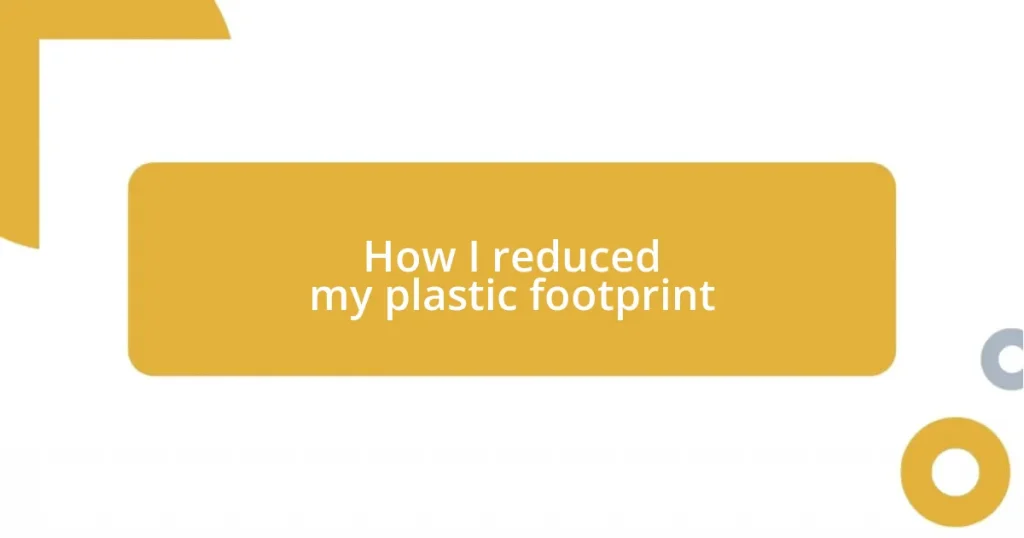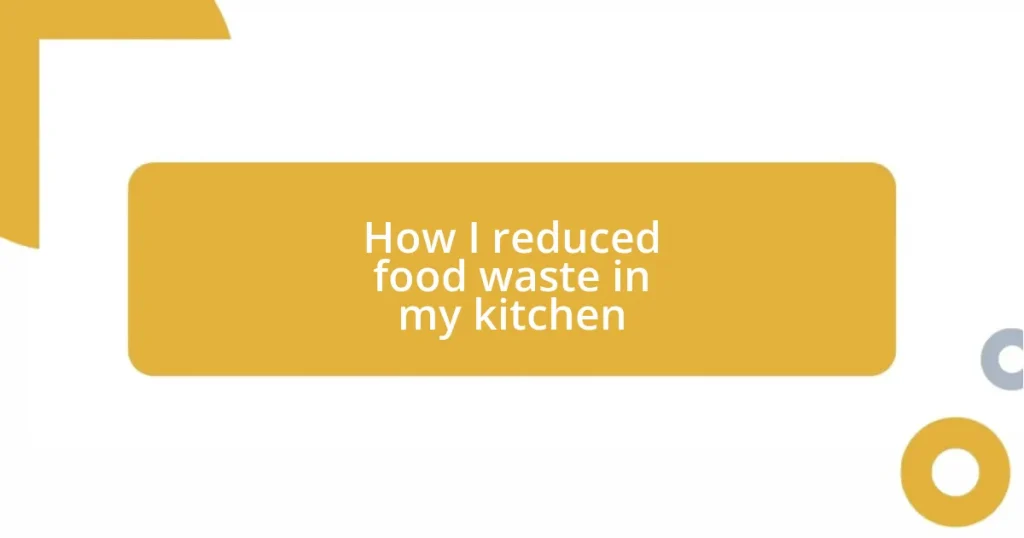Key takeaways:
- Community engagement enhances trust and empowers individuals, leading to actionable and relevant research outcomes.
- Qualitative data, such as personal narratives, adds depth to research and reveals interconnected themes that statistics alone cannot provide.
- Effective communication of research findings to stakeholders through storytelling and visuals fosters understanding and encourages collaborative dialogue.
- Continuous feedback and reflection on research impact strengthen community relationships and improve future initiatives.
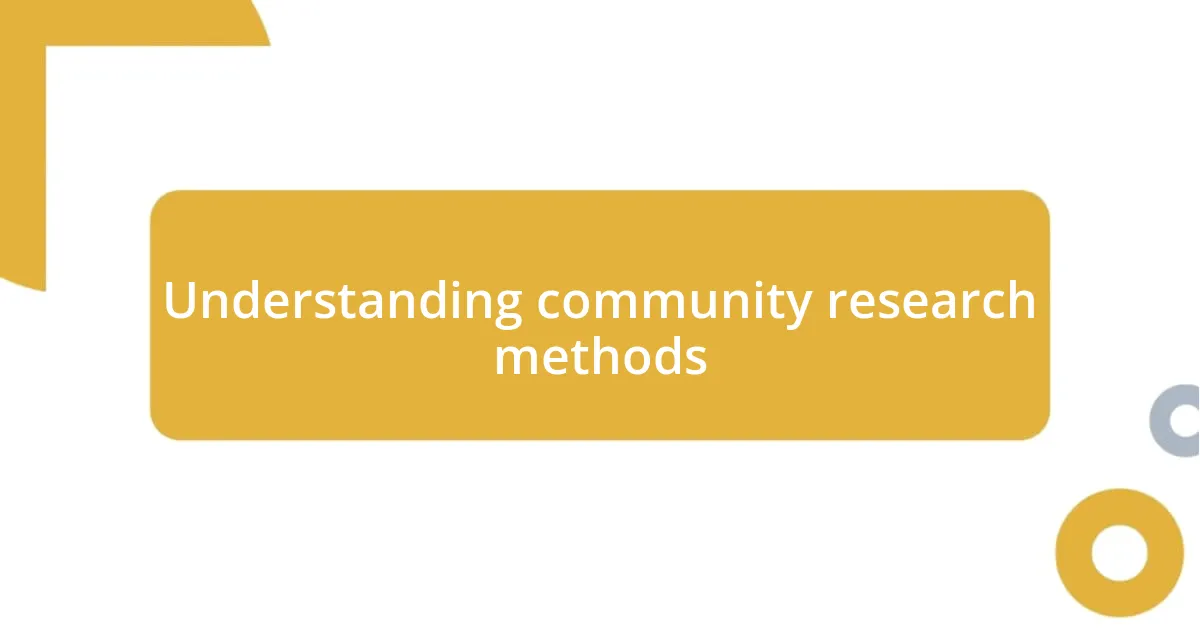
Understanding community research methods
When I first delved into community research methods, I didn’t realize how vital they would be in truly understanding the people I was studying. It felt like peeling back the layers of an onion, revealing insights that statistics alone could never provide. Have you ever wondered how much depth and nuance qualitative data can add to your research?
I remember conducting my first focus group, feeling both exhilarated and nervous. Listening to participants share their stories sparked a realization: their lived experiences were treasure troves of information. These moments of connection brought depth to my findings that numbers simply couldn’t capture.
Engaging with the community through methods like participatory action research taught me the power of collaboration. I still recall the pride in a community member’s eyes when they saw their insights shaping the research outcomes. It’s a reminder that research isn’t just about collecting data; it’s about amplifying voices and fostering change together.
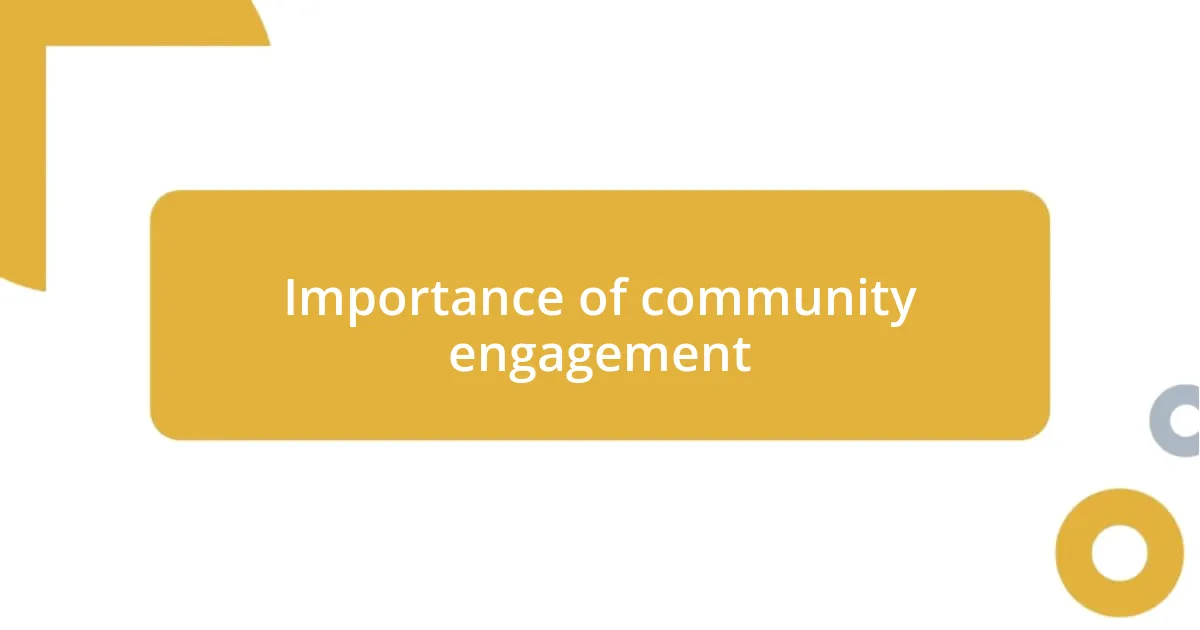
Importance of community engagement
Engaging with the community is not just about gathering information; it’s about building trust and fostering relationships. I once led a workshop where residents shared their concerns about local issues. The atmosphere shifted as they realized their voices mattered, showing how active participation can empower individuals and strengthen community bonds. Moments like these reinforced my belief in community engagement as a cornerstone of effective research.
I’ve learned that when communities actively participate, the research becomes more relevant and actionable. During a project aimed at improving local health resources, we organized town hall meetings. The insights shared by residents not only shaped our approach but also ignited a passion within the community to advocate for their needs. It’s amazing how collective engagement can lead to tangible solutions and uplift the spirits of those involved.
What truly stands out to me is the shared experience of discovery that community engagement fosters. I remember collecting feedback from diverse groups, and the excitement was palpable when solutions began to take shape. Each interaction reinforced the idea that collaboration fuels growth, owning the process, and investing in the future.
| Benefits of Community Engagement | Outcomes |
|---|---|
| Building Trust | Increased participation in community initiatives |
| Empowerment | Enhanced community advocacy |
| Relevance of Research | More actionable and effective solutions |
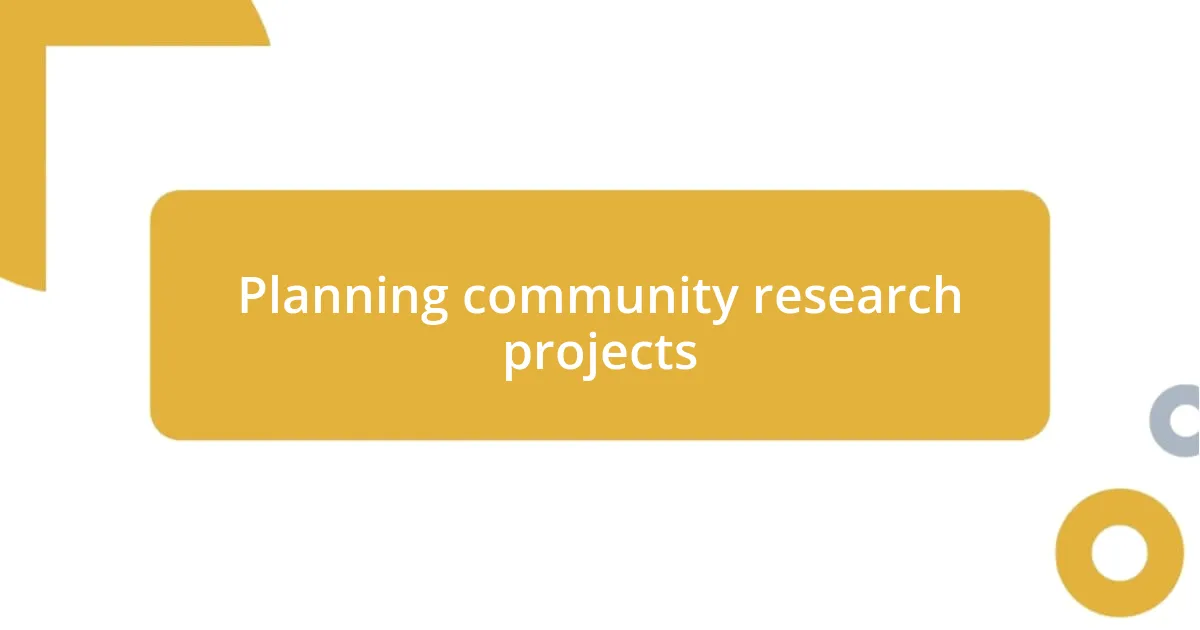
Planning community research projects
When planning community research projects, it’s essential to set clear objectives. I found that outlining specific goals at the start made it easier to engage with communities meaningfully. One project I worked on aimed to assess local resource needs, and I remember sketching out our goals during a brainstorm session. Those small notes turned into the foundation for focused discussions that led to impactful outcomes.
Here are some key elements to consider in planning:
- Define Objectives: What do you want to achieve?
- Engage Community Members Early: Their input can shape the direction of the research.
- Select Appropriate Methods: Choose techniques that resonate with the community.
- Allocate Resources: Ensure you have the necessary time, funding, and tools.
I’ve noticed that being flexible during this phase can make a significant difference. For instance, while developing a survey, we decided to host a few informal meetings to discuss potential questions. The results were eye-opening! Community feedback helped refine our approach to ensure the questions resonated and were culturally relevant. This experience highlighted how adapting plans based on community insights can lead to much richer data.
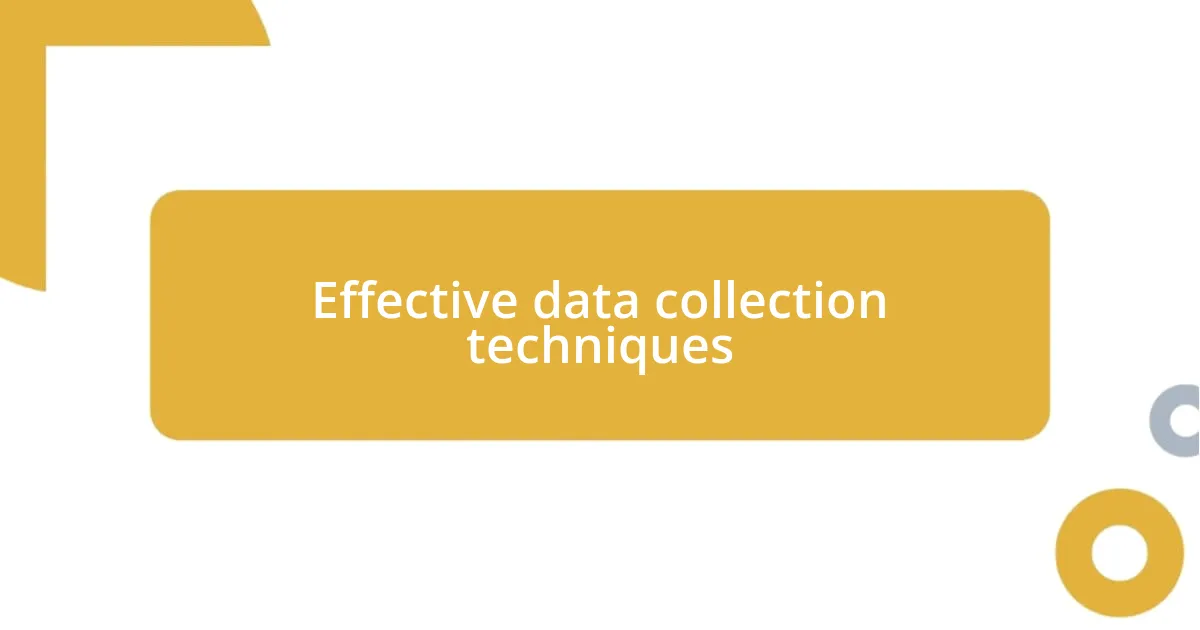
Effective data collection techniques
Gathering data effectively is crucial in community research. I recall participating in a focus group where residents shared stories about their experiences with public transportation. Their narratives not only provided qualitative data but also helped me understand underlying emotions, like frustration and hope. Isn’t it fascinating how personal stories can unveil the larger picture?
Another technique that worked wonders for me is utilizing surveys, particularly in a project aimed at assessing educational resources. We designed the survey to be concise, ensuring that respondents could complete it easily. The key was to ask open-ended questions that encouraged detailed feedback. Have you ever seen how a simple question can spark a wealth of insights? I certainly did, as responses poured in, revealing common themes that guided our next steps.
Additionally, I found that incorporating visual methods, like community mapping, was an eye-opener. During one session, residents marked areas they deemed important or problematic. Watching their faces light up as they identified these spots was enlightening. It made me realize that visual aids can amplify voices and lead to richer, more meaningful data collection. What if we continually harnessed such tools? The potential for understanding our communities would be immense.
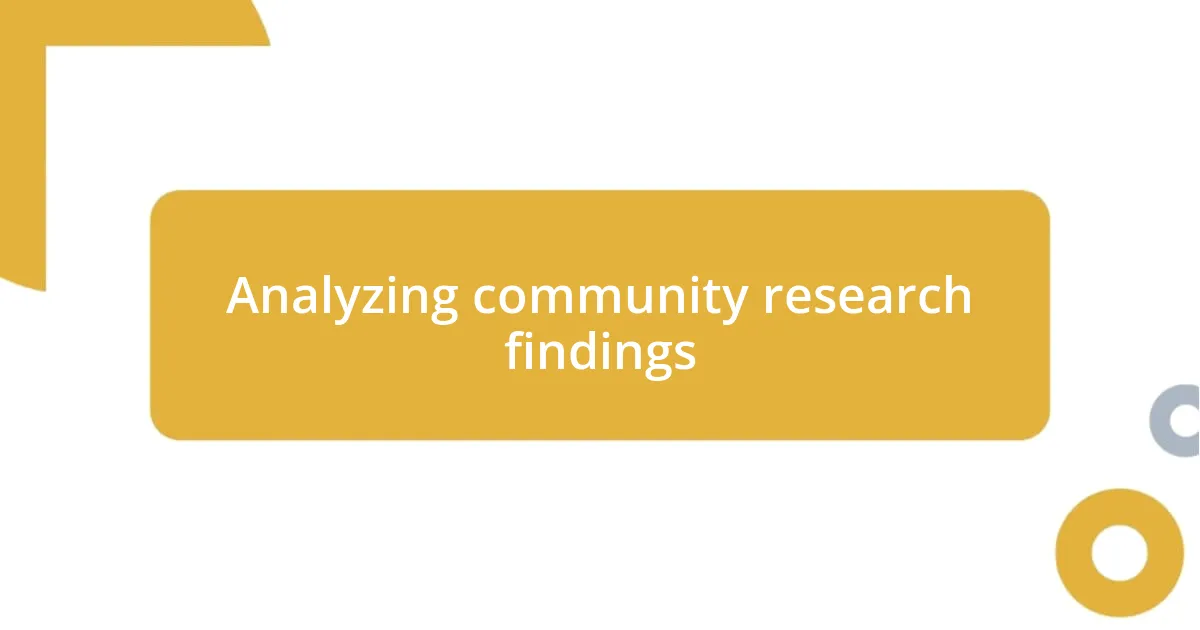
Analyzing community research findings
Analyzing community research findings is where the real magic happens. I remember sifting through survey responses after a project on local health resources. It was eye-opening to see the patterns emerge—what I thought were isolated issues turned out to be interconnected themes. Have you ever had that moment when you realize a simple data set is telling a much bigger story? Those connections can guide actions and solutions that truly resonate with the community.
Sometimes, when diving into the data, I find it helpful to engage other team members in the analysis process. In one project, we gathered around a whiteboard and started organizing our findings into categories. As we discussed, ideas sparked, and I was reminded of how collaborative thinking can lead to surprising insights. Why is it that having more minds on a problem can illuminate aspects we might otherwise overlook? That shared reflection made our results even richer and more robust.
Another powerful aspect of analysis is integrating community narratives into findings. I often referred back to the personal stories shared during our data collection. It wasn’t just about numbers; the sentiments behind those numbers provided deeper understanding. I asked myself, what do these stories mean for our community’s future? By bridging qualitative insights with quantitative data, I found we could create a more thorough and compelling narrative that not only informed but also inspired action within the community.
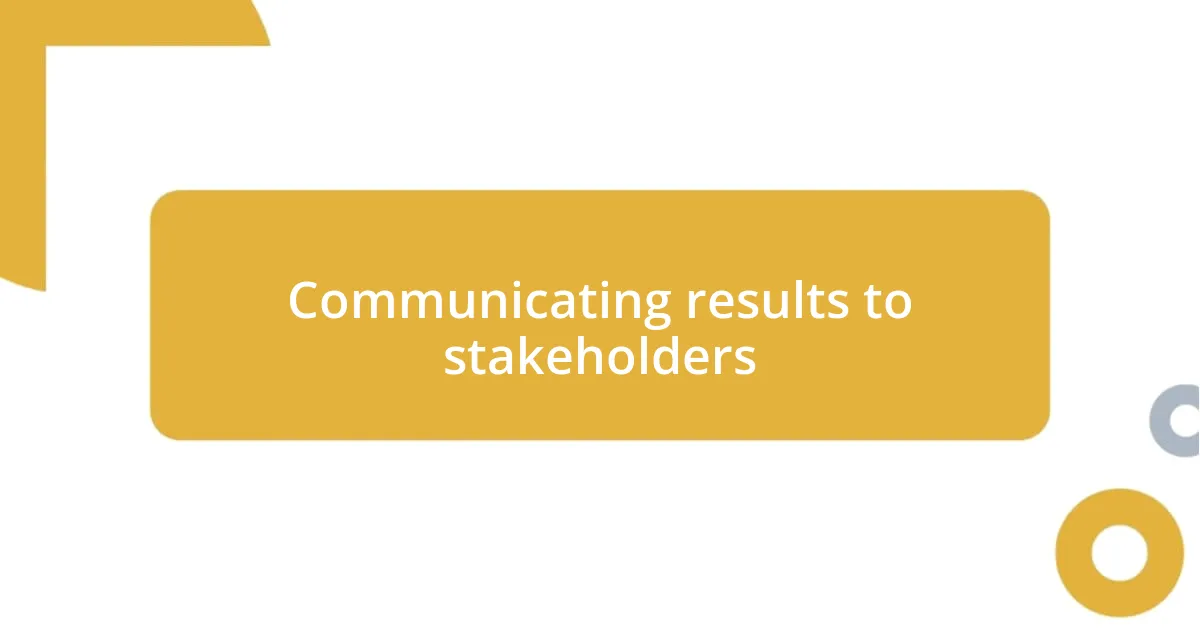
Communicating results to stakeholders
When it comes to communicating results to stakeholders, clarity is paramount. I once presented findings from a community health initiative to local government officials and community leaders. I remember the initial tension in the room; they seemed skeptical. So, I made it a point to use straightforward language, coupled with relatable examples from our research. By narrating a compelling story around the data rather than drowning them in numbers, I noticed their expressions change—interest sparked, and conversations flowed. Isn’t it amazing how effective storytelling can bridge the gap between data and stakeholder understanding?
In my experience, visuals play a vital role in communicating results. I created infographics to illustrate key findings that highlighted both successes and opportunities for improvement. Sharing these visuals during community meetings was a turning point for me. I observed how stakeholders, who previously felt distanced from the data, became actively engaged. Seeing them point at areas of interest made it clear: visuals translate complex data into accessible insights. How often have you witnessed a graph or chart ignite a debate? It’s truly powerful to see people connect with the information on a deeper level.
Lastly, feedback loops are essential when conveying research outcomes. During a project on youth engagement, I made it a habit to invite stakeholders back for feedback sessions after presenting initial findings. At one such meeting, a participant challenged some assumptions we had made, leading to a heated but constructive discussion. This moment underscored for me the importance of creating a dialogue around results. Why hold back valuable insights when stakeholders can refine our understanding? Engaging them not only enhances the findings but fosters a sense of ownership that can inspire action within the community.
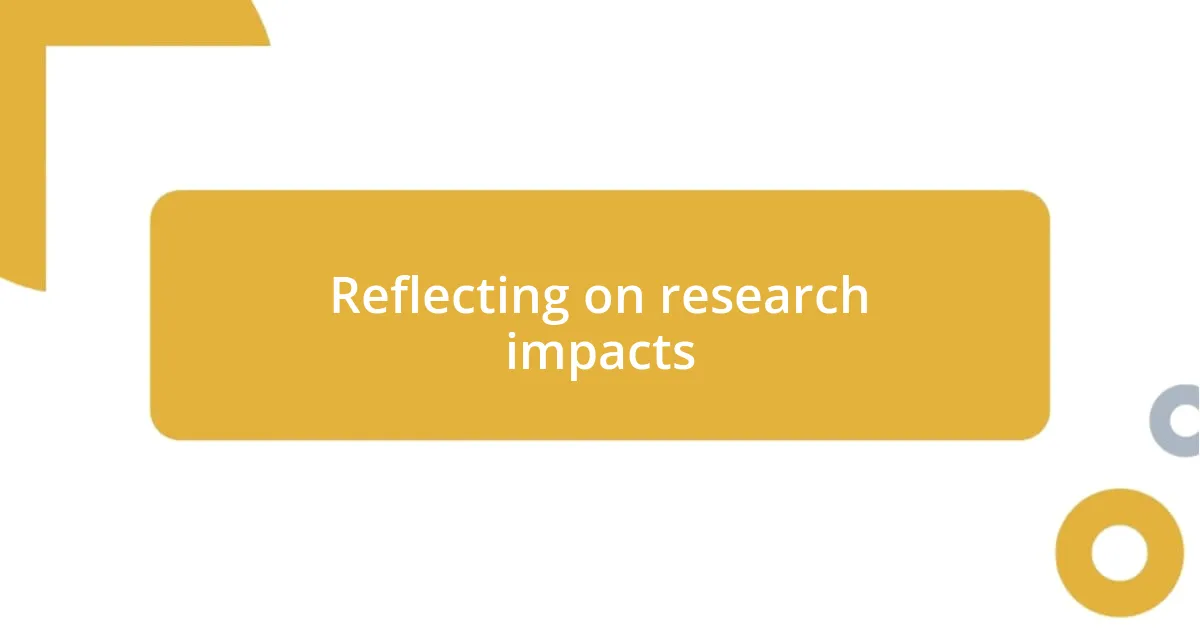
Reflecting on research impacts
Reflecting on the impact of community research has often left me in awe of the transformative power it holds. I once worked on a project focusing on food insecurity within a neighborhood, and the outcomes were staggering. Seeing families gain access to resources they previously could not reach was humbling. How often do we underestimate the real change that stems from our findings?
It’s not just the tangible outcomes that resonate; it’s the emotional connections forged along the way. I vividly recall a moment during a community forum where an elderly resident shared her struggle with accessing fresh produce. Her voice wavered with emotion, and it struck me how our research could spotlight such personal stories. Have you ever considered how these voices can push research beyond academic boundaries? When we amplify those narratives, we elevate entire communities and inspire more profound change.
Reflecting on this journey, I’ve realized the importance of continuous feedback and evaluation. After a local initiative aimed at improving access to mental health resources, I facilitated follow-up discussions. The insights shared were invaluable; they allowed us to pivot and enhance our approach. I couldn’t help but wonder: how often do researchers revisit their findings? This cycle of reflection not only enriches the research but also cements relationships with the community.







